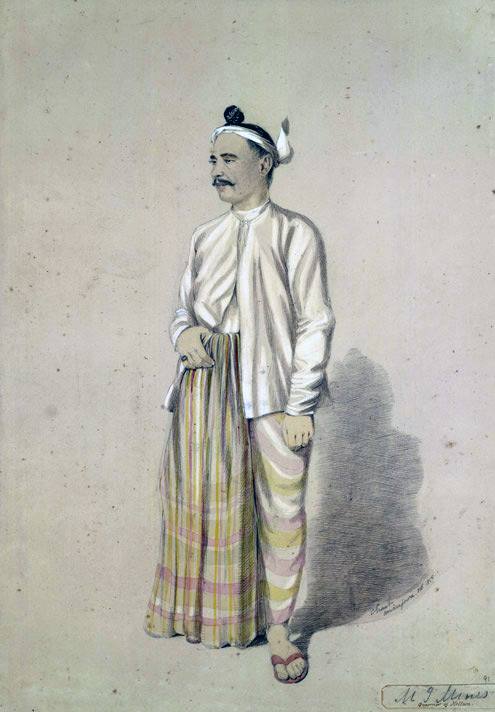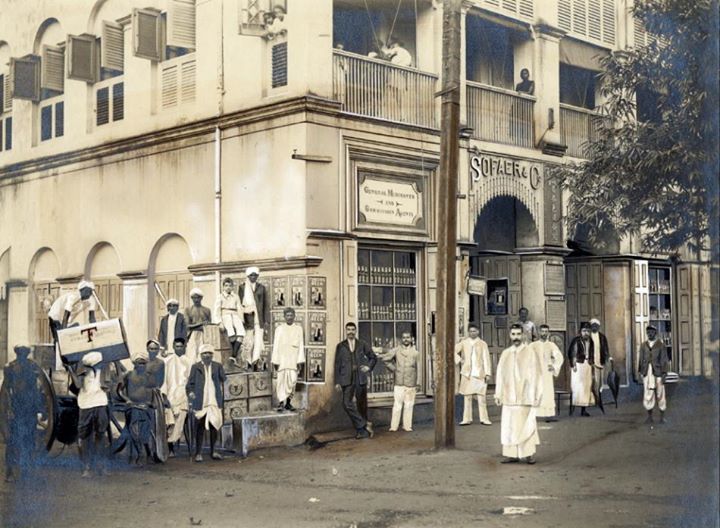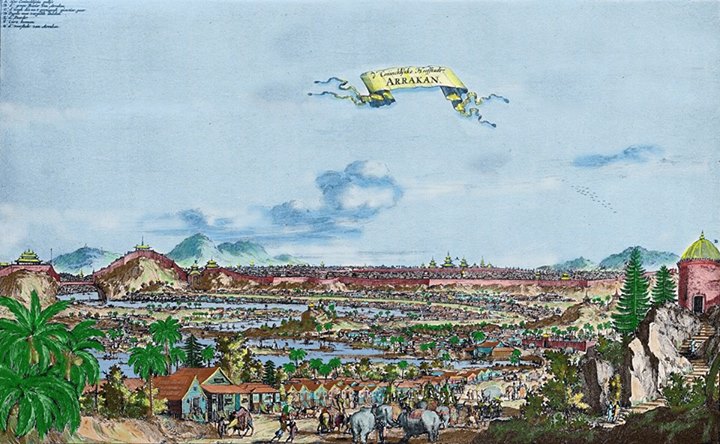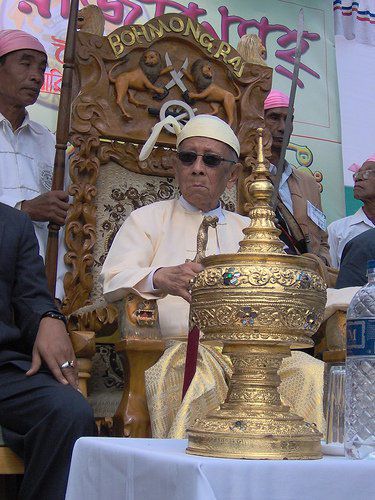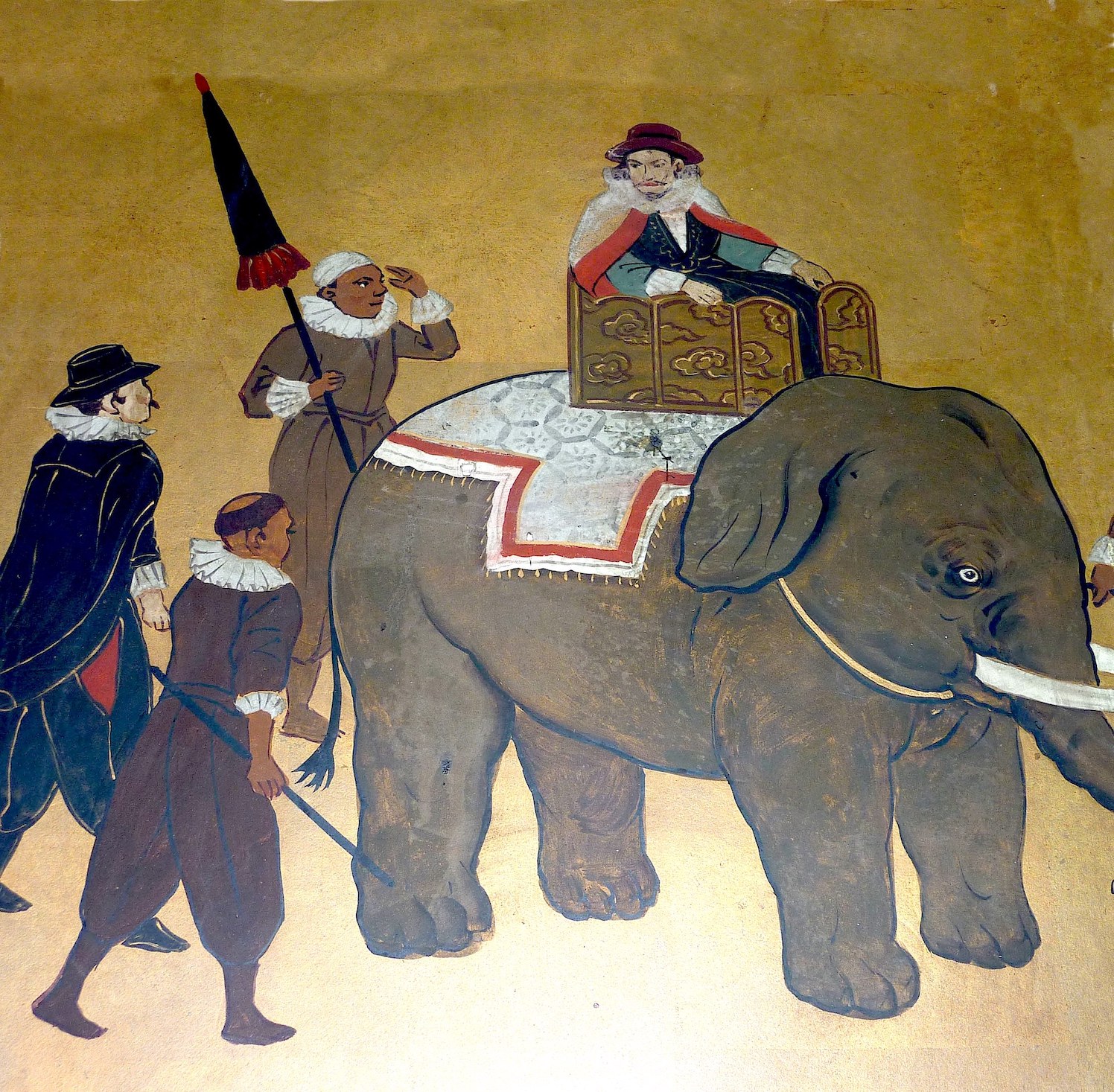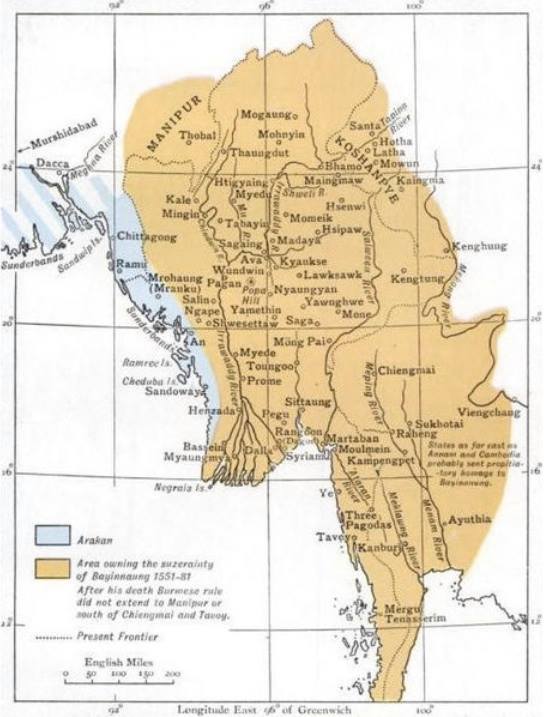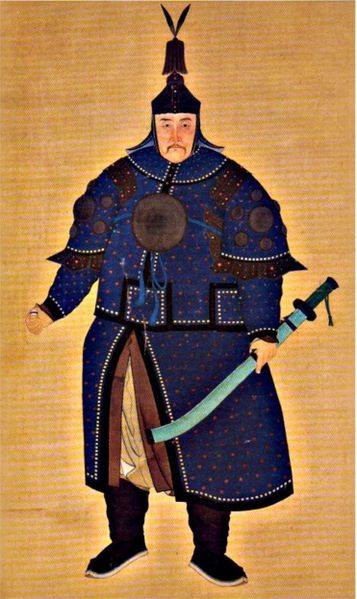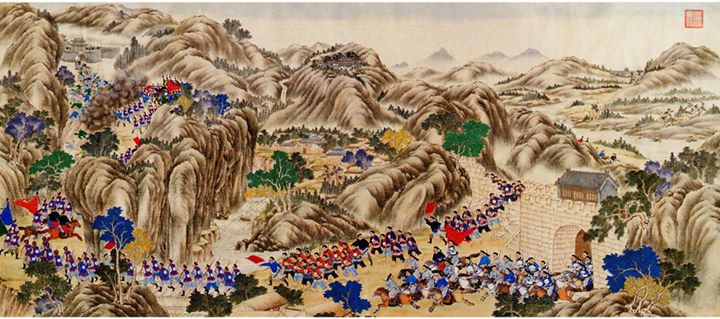Early Modern Myanmar and its Global Connections (1510-1824AD)
Myanmar in early modern times begins to resemble the Myanmar of today, with Burmese speakers in the Irrawaddy valley and other communities - including the Mon, the Shan, and the Arakanese - living in adjacent regions. This was a Myanmar that was connected not only to the Indian and the Chinese civilians next door but also to countries across Asia and, by the 1500s, to Europe as well. It was a Myanmar that saw the rise and fall of empires but also the existence of dozens, perhaps hundreds other polities, especially in the uplands which remained far from any royal writ. And it was a Myanmar which was tied to global economic trends as well as dynastic and other political changes in Siam, Mughal India, Ming China, and beyond.
From an executed Portuguese warlord to a forgotten Indian botanical artist and the Armenians who mingled in Rangoon high-society, this section introduces some of these global connections. These cultural intersections have had a lasting impact on Myanmar, with borrowed words from multiple languages and architectural legacies that remain to this day. Meanwhile, Myanmar's shifting borders led to some people and some stories being either incorporated or abandoned.
Historic Events
The Armenian community of Myanmar
One of the least known but most interesting of Myanmar's minority communities were the Armenians. They had migrated to Myanmar from Persia as early as the 1610s and the first Armenian tombstones in Myanmar date back to 1725. Hundreds of Armenian-Burmese served at the Court of Ava and worked as merchants in Amarapura, Mandalay and Rangoon and elsewhere. The legacy of Armenians in Myanmar is visible to this day. The Strand Hotel was built by the Armenian Sarkies brothers (who...
Read MoreThe Jewish community of Myanmar
One of Myanmar's least known minority communities are the Myanmar Jews. There have likely been Jews in Myanmar for many hundreds of years, perhaps since ancient times. The first Jew known to Myanmar history was Solomon Gabirol, who served as an officer in the army of King Alaungpaya (c.1755). Jonas Goldenberg, a Moldavian Jew, made a fortune in logging as a business partner of the Mandalay court under King Mindon. Many Jews who arrived in the 19th century were Baghdadi...
Read MoreBayinnaung's invasion of Arakan in 1580
On 9 September 1580: Bayinnaung launched a massive invasion of Arakan. The Toungoo realm was then at its greatest extent - reaching from Manipur in the west across all the Shan states to Lanxang (Linzin in Burmese or Vientienne) and Ayutthaya in the east. Only Arakan remained unconquered. The invasion was led by Prince Thiri Thudhamma Raza of Martaban and was a joint land and naval expedition that included 24,000 foot soldiers, 1,200 horses, 120 elephants, and 1,300 vessels (leaving...
Read MoreThe Rajas of the Bohmong
By historical accident, a direct male-line descendent of King Bayinnaung still holds hereditary office in neighbouring Bangladesh. In 1599, after the successful Arakanese attack on Pegu, a son of King Nanda Bayin (son of Bayinnaung) was placed in charge of an area around Chittagong by the King of Arakan. Called Maung Saw Pru, he reigned until 1631. Ever since, his descendants have ruled over what has become known as the 'Bohmong Circle', home to over 200,000 people of Arakanese, Burmese,...
Read MoreAlaungpaya’s occupation of Pegu and the defeat of Hanthawaddy kingdom
On 5th May 1757, Pegu fell to the forces of Alaungpaya, ending the war between the upper and lower Irrawaddy valley, extinguishing the Hanthawaddy kingdom, and establishing the Konbaung as the new rulers of all Burma. The war had taken place within the context of the global “Seven Years War” whose battlefields stretched from Quebec to Pomerania to Bengal. In Burma the Konbaung were aided by the British, whereas the Hanthawaddy kingdom under its Mon ruler Bannya Dala was actively...
Read MoreThe end of Filipe de Brito
In April 1613 the warlord Filipe de Brito e Nicote (known as Nga Zinga in Burma) was impaled on a stake in Syriam. He was the most colourful of Portuguese adventurers: he began his life in poverty in Lisbon, served the king of Arakan as a mercenary, and then rose to become to the lord of Syriam. His friend and ally was the renowned Burmese prince, poet, and polo player Natshinaung of Toungoo. Together with a motley crew of Portuguese,...
Read MoreThe Bayingyis of Myanmar
One of the smallest but perhaps most interesting Christian communities in Myanmar are the bayingyi of the Mu valley (near Shwebo). Bayingyi is a derivation of the Arabic word Feringi or frank, meaning, roughly, a western European. It is the same as the Thai word farang or the Khmer barang. The first bayingyis of the Mu valley were the hundreds of mainly Portuguese followers of the Syriam warlord Filipe de Brito who were exiled there by King Anaukpetlun in the...
Read MoreBayinnaung, the warrior king
Myanmar's archetypal warrior-king, Bayinnaung (personal name Ye Htut), was born on 16 January 1516. His polyglot empire dominated mainland Southeast Asia, integrating the Irrawaddy valley with the Tai-speaking uplands and the Chao Phraya valley to the east. This map (from G.E. Harvey's 1925 History of Burma) shows Bayinnaung's empire at its height c. 1565 after his conquests of Siam, and the Lanna and Lanxang kingdoms; the even more cosmopolitan empire of Arakan was then a separate and significant power. What...
Read MoreThe Treaty of Kaungton
The Treaty of Kaungton was signed on 22 December 1769 and marked the end of the Sino-Burmese War (1765-1769). Burmese forces had successfully resisted four Qing (Manchu) invasions, including a massive fourth invasion of over 60,000 troops sent by the Emperor Qianlong to annex Burma. It was the Qing Empire's greatest defeat. The Qing armies included elite Bannermen - Manchus and Mongols as well as Han Chinese - brought down from the Russian border. The Burmese side was led by...
Read MoreOrigin of the Kokang
Kokang (now a "Self-Administered Zone") has a particularly interesting history. In the mid-1600s, the Ming dynasty in China was falling fast to the invading Manchus. The last Ming emperor (the Yongli Emperor, better remembered as the Prince of Gui) fled first to Yunnan and then eventually across the border to Ava. The new Manchu "Qing" dynasty would rule until 1912. The Prince of Gui was followed by many tens of thousands of Ming loyalists, among them a man named Yang...
Read More